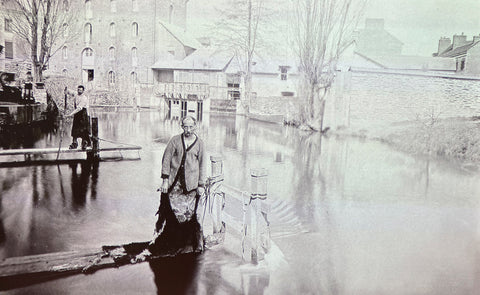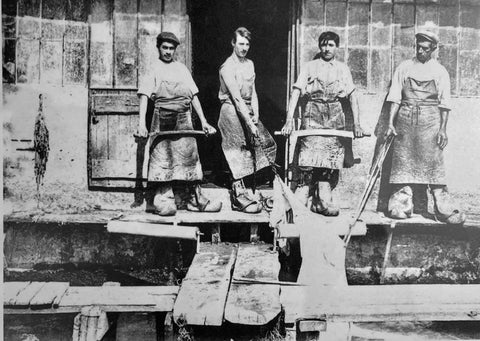In the tannery, the skins are first soaked in the water to be desalated and rid of their stains. This is the work of redevelopment. It consists in particular in restoring flexibility by rehydrating the skin.

Late nineteenth century reversal work.
|
Summary 1. River work |
River work
River work began with the cleaning of skins. In the past, they were hung on a stake, in the middle of the river, which were accessed by a pontoon. The current had the effect of removing the skins the impurities and the salt. Hooks and river pliers were used to pull and move the skins in the tannery. The tanners carried on their hooves of protective leather gaiters called houseaux.
After 1850, in some tanneries, the rebound work was done in barrels or Wooden rails, filled with water and skins, which turned on themselves. Inside, wooden ankles unfolded the skins and remained its dirt. The barrel door then opened to evacuate everything.
Today, the reversal and epilage operations of the skins can be carried out successively in the same fuller. See the dedicated article.

France, Indows-and-Loire, late 19th century, skin washing
 any question ?
any question ? 

